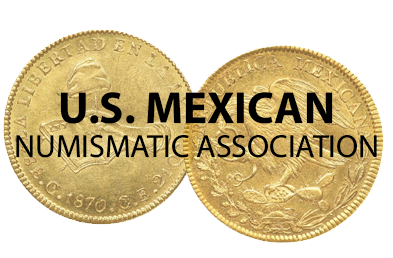Numismatic Heritage of Mexico Series
In 2011, the Casa de Moneda initiated a new series presenting the historical coinage of Mexico from Spanish colonial times through to the modern era, A few members of the series commemorate not only the coin’s design type but its role in trade (e.g. coins chopmarked during use in China). The bimetallic coins were issued with a Brilliant Uncirculated finish. Each reverse bears a reproduction of a different historical coin. and each coin contains ½ ounce of sterling silver.
Mintage was 8,000 for each issue.
Series I
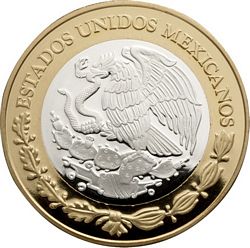
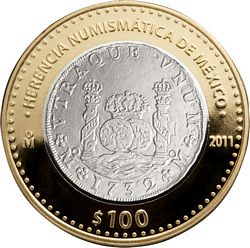
KM-950
During the reign of King Philip V, Mexico began to produce coinage with a screw press. yielding a vast upgrade in quality over the previous, hammered coins. The new “milled” coins were preferably round and their surfaces were evenly struck. Unlike their hammered counterparts, they had designs impressed to the edge in the edges to prevent illegal clipping of the silver or gold from the coins. Their reverse design, the Pillars of Hercules flanking two globes above a stretch of water, lends the coin their name, Pillar coinage.
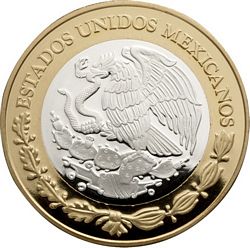
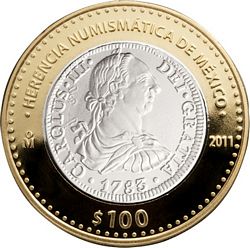
KM-951
Under King Charles III, Spanish milled coinage underwent a major design change. Formerly, the Spanish coat of arms had graced the obverse, while the reverse bore two globes flanked by the Pillars of Hercules. Now the arms moved to the reverse, in place of globes: a bust of the the king appeared on the obverse. This would remain the design standard for the rest of the colonial era. Charles III, in the robes and laurel of a Roman emperor, appears on the first Portrait 8 realities.
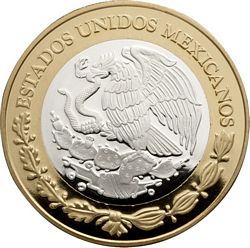
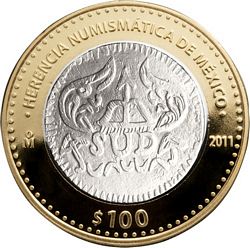
KM-952
During the War of Independence, Insurgent general José María Morelos had his own coins minted to pay his troops. These copper coins, with a bow-and-arrow motif and the word SUD were given out with the expectation that they would be redeemable in silver and gold when such coins became available.
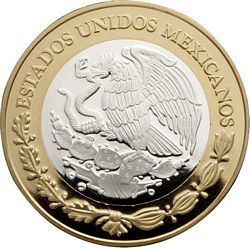
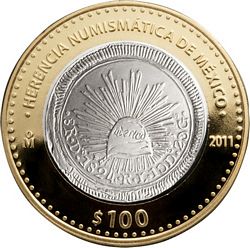
KM-953
In 1823 the new republic minted its first coinage denominated in reales and escudos. The obverse design is the Profile Eagle, the reverse design for silver coins is a large radiant, liberty cap. Cap and Rays coins with the Profile Eagle obverse were produced from 1823 to 1825, at three mints and in four denominations.
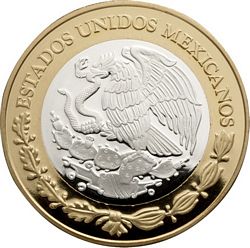
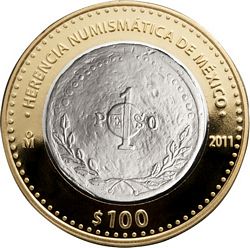
KM-954
An iconic coin of the Revolution, the Bolita peso was minted in Hidalgo del Parral in the state of Chihuahua. The coin gets its name for the bolita (little ball) over which the denomination is superimposed.
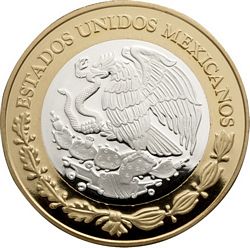
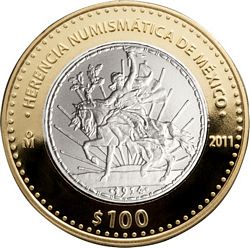
KM-955
The one peso of 1914 was both the first peso of the 1905 Currency Reform and a circulating commemorative of the centennial of the War of Independence. The coin is affectionately known as the Caballito.
Series II
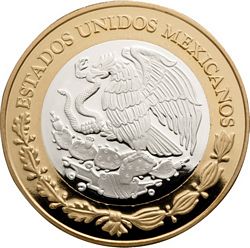

KM-963
This coin demonstrates both the historic prestige of Mexican 8 reales and the reach of imperial Spain. The underlying coin was issued under King Charles IV and bears Chinese chopmarks on both sides and a Spanish counter stamp on the portrait bust.
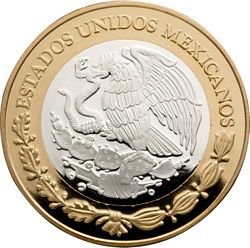
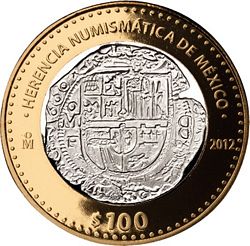
KM-964
Cob coins were struck with a hammer on somewhat irregular planchets. Despite their ragged edges and lumpy surfaces the coins were widely accepted by the public due to the purity of their silver content. The coin chosen to commemorate the Cob era is an 8 reales struck during the reign of King Philip III.
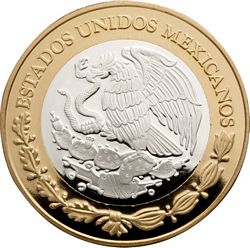

KM-965
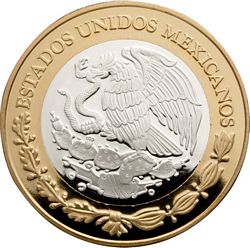
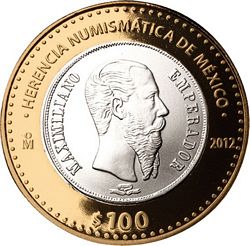
KM-966
Near the end of the First Republic, the Mexican government attempted to convert the reales system of coinage to the decimal system, By the time of the French Intervention, however, only the one, five and ten centavo denominations had been produced. The French Regency decreed the minting of five and ten centavos in April 1864: two years later, Emperor Maximilian decreed coins of one half, one, five, ten, 25 and 50 centavos and one, five, ten and 20 pesos, all bearing his effigy.
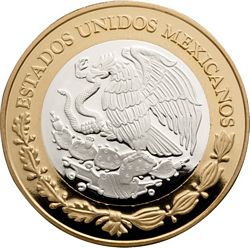
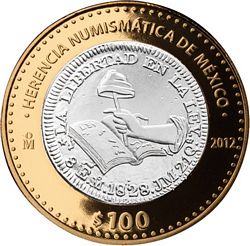
KM-967
The official reverse design chosen for the gold coins of the First Republic came to be known as the Hand on Book motif.
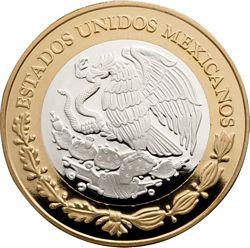

KM-968
In 1950 after two decades of planning and construction the Ferrocarril del Sureste (Southeastern Railway) was opened. The coin commemorating the event depicts a steam engine and tracks in front of a lushly planted hacienda with palm trees signifying the link to Yucatán.
Series III

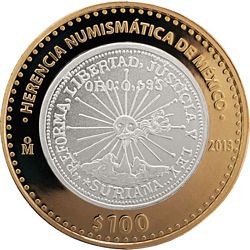
KM-971
During the Revolution, Guerrero was the base of operations of Emiliano Zapata, under whose authority coins were struck in seven temporary locations. The mines of Campo Morado, in particular, provided enough silver and copper to make it one of Zapata’s better mints.
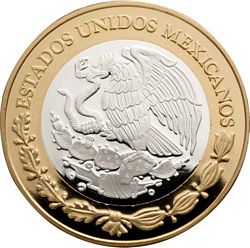
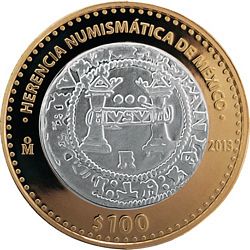
KM-972
The first coins minted at the first mint in the New World were coins of Carlos and Joanna. A 3-reales example was chosen for the commemorative series.
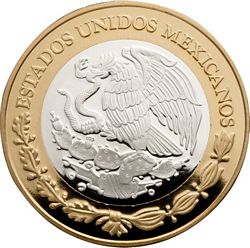
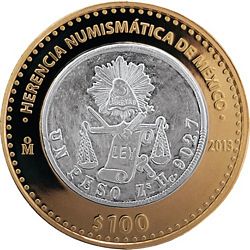
KM-973
The Balance Scale peso was intended to replace the 8 reales as a trade dollar. Its three motifs - a sword, a two-pan scale, and a scroll with the word LEY - represented the executive, judicial and legislative branches of Mexico's government. It was struck from 1869 through to 1873, but was never widely embraced. In 1874 the government gave up the idea of a decimal trade dollar and restored the familiar and popular Liberty Cap 8 reales for that purpose.

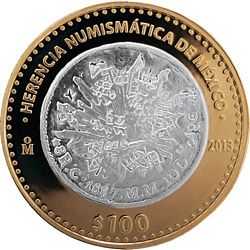
KM-974
In the 19th century, the Mexican 8 reales was the world's most popular trade dollar and China was eager for silver coins. Each time an authentic silver coin passed through the hands of a local bank or money changer the handler would imprint a unique mark, or chop, as a guarantor of the coin’s silver content.
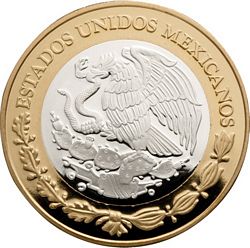
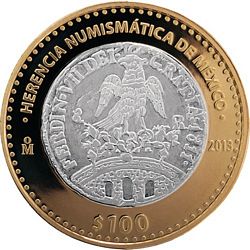
KM-975
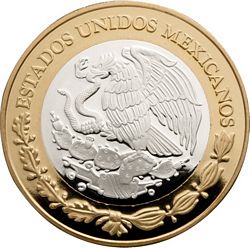
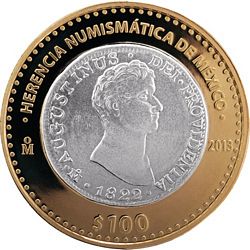
KM-976
The coinage of the short rule of Augustín de Iturbide consists largely of issues from the mint in Mexico City. These coins depict a right-facing bust of emperor Augustin I on the obverse, and a crowned Mexican eagle on a nopal cactus growing from a rock on the reverse.
Series IV
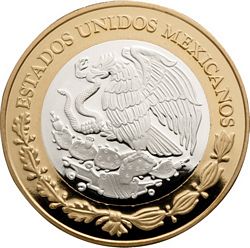
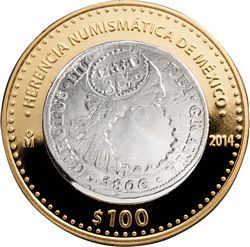
KM-980
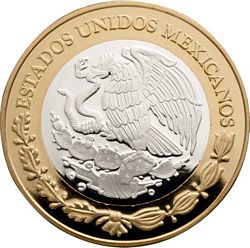

KM-981

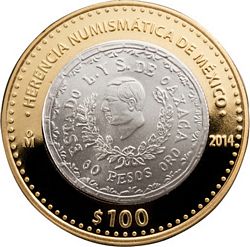
KM-982
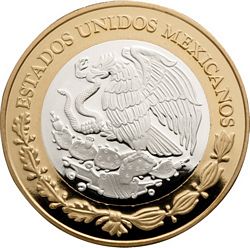
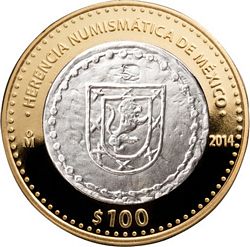
KM-983
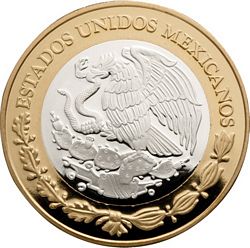

KM-984

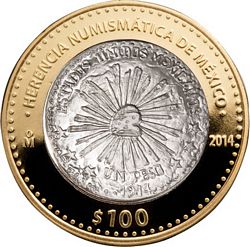
KM-985
